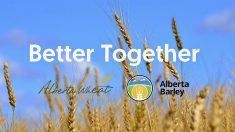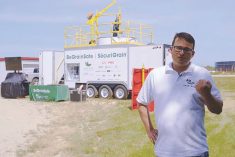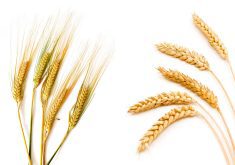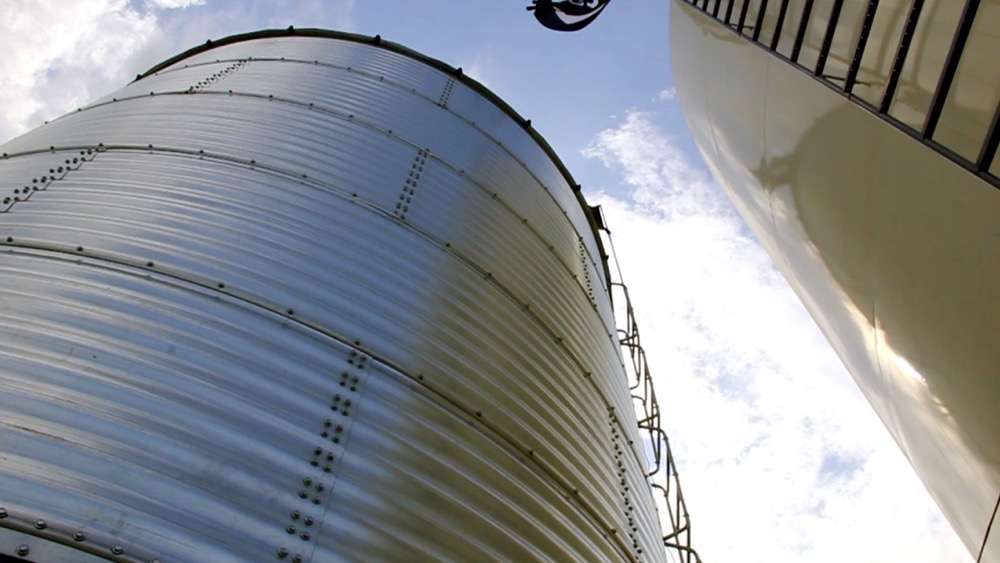Alberta Pulse Growers and Alberta Wheat Commission along with the Canadian Canola Growers Association and Prairie Oat Growers Association have committed $120,000 to the Grain Safety Program.
The program, an initiative of the Canadian Agricultural Safety Association, will educate farmers, farm workers, and farm families about the dangers of grain handling and storage.
“The Alberta Wheat Commission is excited to be part of this grain safety initiative and it supports our belief that education is the most effective way to promote farm safety,” said Alberta Wheat chair Kevin Auch. “This is a great program and our commitment ensures growers have access to tools that can help shape a safe farming operation.”
Read Also

Farming Smarter receives financial boost from Alberta government for potato research
Farming Smarter near Lethbridge got a boost to its research equipment, thanks to the Alberta government’s increase in funding for research associations.
The $120,000 contribution will help the Grain Safety Program launch and operate. The program includes a mobile demonstration unit, a trade show display, youth tabletop displays, and an interactive grain safety website. It will start with one mobile unit and trade show display, focused on Manitoba, Saskatchewan, and Alberta.
“APG’s support of the Grain Safety Program is about reducing injuries and deaths on Alberta farms,” said Alberta Pulse Growers chair Allison Ammeter, who farms near Sylvan Lake. “Producers and their families take steps to prevent injuries on their farms every day, and we want them to have the best information to stay safe around grain.”
The mobile unit will also help train first responders who are faced with a grain entrapment emergency.
There is a new emphasis on this area due to the high numbers of entrapments occurring as grain storage capacity expands, said Glen Blahey, a safety and health specialist at the Canadian Agricultural Safety Association.
From 2003 to 2012 there were 34 confirmed deaths. Last year alone there were seven, including four children. In Alberta, three children in the same family died after becoming entrapped in a truckload of canola.
Last year may have been “a bit of an anomaly” but the number of entrapments is far too high, and is on the rise, Blahey said.
“We see them progressively increasing,” he said.
Farmers or bystanders often fail to recognize the dangers, including realizing that the surface of grain is just like quicksand. There have been multiple incidents when someone has attempted to stand on or cross a grain surface and been sucked down as it’s being drawn out of the storage from below, Blahey said.
Entrapments also occur if someone attempts to walk across the surface of grain where a void exists beneath. This occurred in Manitoba a few years ago, when a farmer who was unloading grain entered the bin from the top to break a crust over the surface where the grain bridged. He broke through and was immediately enveloped from the grain that came down from the sides on top of him.
Death by grain entrapment also occurs if someone enters a storage facility and solidified grain on the walls collapses.
The first responders’ training is also very important because in rural situations many of these people are volunteers and the extrication procedures are difficult, technically challenging and dangerous in their own right, despite the precautions. Even as these incidents are on the uptick, the specialized training they need can remain a lower priority because they don’t happen all that frequently, said Blahey.
The first phase of the Grain Safety Program will run for three years and cost $400,000, with more than $300,000 raised so far. A second phase expanding the program into more communities would require another $385,000 in funding.
Other donations and sponsorship have come from grower associations, companies, event organizers and media sponsors across the country.
With material from CASA release















